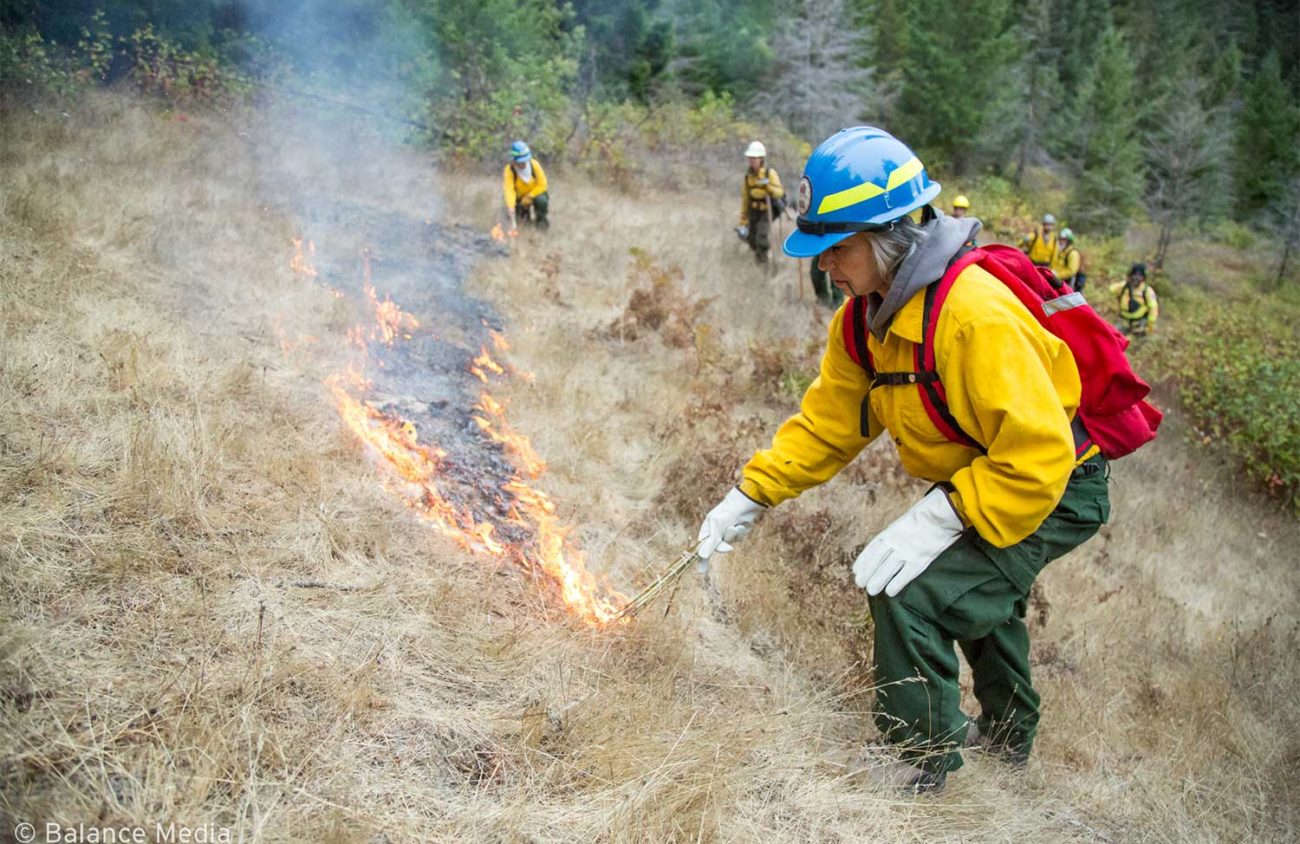When Portland-based and University of Oregon alum Trip Jennings first started filming Elemental: Reimagining Our Relationship with Wildfire, he was concerned that interviewing wildfire survivors about their worst days and turning it into a documentary would be re-traumatizing.
But Jennings says the documentary has helped people process the wildfires they survived and has given them hope.
Elemental: Reimagining Our Relationship With Wildfire isn’t supposed to be grim, communicating that climate change will increase the likelihood of extreme wildfires and that it’s “game over,” Jennings says. The documentary features incredible shots of Oregon terrain burned in 2020 and explores how people in wildland-urban interface areas can co-exist with wildfires and how communities can withstand the most extreme climate change-caused mega disasters.
After shooting the documentary, which opens in Salem Cinemas and the Eugene Art House Friday, Sept. 9, Jennings says he thinks Oregon is in a position to pass legislation that can make adapting to our wildfire future more accessible, which could be a model for the rest of the nation.
The idea for the movie started in 2017, Jennings says, when the Eagle Creek wildfire was burning. He says when the fire began, he was hopeful for the post-fire ecosystems that would rise afterward. But he was surprised by the Oregon community’s reaction to the fire, which included former Congressman Greg Walden’s call for increased post-fire logging.
He says he started the project with the intent of showing the importance of prescribed fires and looking at Indigenous peoples’ relationship with fire.
Early in the project, the 2018 Paradise, California, wildfire happened and Jennings came across work by retired U.S. Forest Service Fire Lab research scientist Jack Cohen, who has studied how home structures ignite during wildfires.
“I realized that the story is different than it was,” Jennings says. “The story needs to be about how we protect our homes and communities from the fires that are inevitable.”
The most dangerous wildfires are the ones that destroy homes, he adds. “And there’s no way we’re going to be able to stop them. There’s no management plan that we can put in place that will stop those 2 percent of the fires.”
The documentary was shot over five years, adjusting to his and other members of the team’s day job demands. Jennings works on the PBS show Weathered, which runs programs about natural disasters and how to prepare for them. The Elemental filmmakers used time lapse photography to capture changing terrain after wildfires, aerial shots of recently burned areas in Oregon (including the Holiday Farm Fire site) and trail cameras.
The documentary cost about $200,000 to produce, Jennings says. The first batch of grant money came from Natural Geographic, and then the Patagonia clothing company gave more money in another funding round. The project has also received grants from Oregon Community Foundation and the Meyer Memorial Trust.
Wildfires will continue to be a regular occurrence in the North American West, from Southern California to Alaska. Because of climate change, decreased snowpack during the winter decreases summer water availability, which leads to drier soils and vegetation, increasing wildfire risk, according to the data from the U.S. Environmental Protection Agency.
Wildfire seasons have also started earlier in summer. According to the EPA, from 1984 to 2001, the peak wildfire season was in August — it’s now as soon as July. And greenhouse gas emissions, which create a warming effect, are still rising, causing an overall increase in global temperatures.
An important part of Elemental is influencing people to prepare their homes for wildfires. “The world is getting hotter and drier. We’re seeing more and more damage to human communities most years,” Jennings adds.
Adapting communities to wildfire, and not relying on an emergency response approach, doesn’t mean resorting to a “concrete ammo bunker to prevent the next Paradise,” he says, quoting Cohen’s interview in the documentary.
“Home hardening,” Jennings says, is what he learned as a way to keep a home safe. That includes mesh covers over vents to prevent embers from entering, multi-paned windows to protect glass from breaking and allowing fire to enter and Hardie Plank fiber-cement materials for outside the home. Fiber-cement siding looks like wood but doesn’t burn like wood.
Living in wildfire zones also means flipping how gardens are planted. Homeowners should place noncombustible materials in the first five feet around their house instead of plants, he says. “Just five feet of concrete or river stones or something like that can save your whole house,” he adds.
While shooting Elemental, Jennings says he spent time in the field with state Sen. Jeff Golden (D-Ashland) and state Rep. Dacia Grayben (D-Tigard). He says Oregon has the potential to make groundbreaking legislative work in addressing wildfire response. “Which would be so cool,” he adds. “We could lead the country in doing this work.”
Such a bill could quantify who’s living in the most dangerous wildfire zones and help them pay to retrofit their homes.
“We’re not talking about wealthy people who live in the wildland urban interface and who are at risk,” he says. “There’s farmworkers living in company housing that don’t really have a lot of control over their housing. Perhaps they’re migrants right here to do an important service that we need, which is to harvest and grow the food that we depend on.”
Elemental: Reimagining Our Relationship with Wildfire opens with a sold-out showing 7 pm Friday, Sept. 9, at the Eugene Art House, 492 E. 13th Avenue, and features a post-show discussion by Timothy Ingalsbee, co-founder and executive director of Firefighters United for Safety, Ethics and Ecology (FUSEE). A portion of opening night ticket sales and beverage sales benefit FUSEE. The film runs through Thursday, Sept. 15.
Jennings leads a Q&A at the Sept. 9 opening at Salem Cinema.
